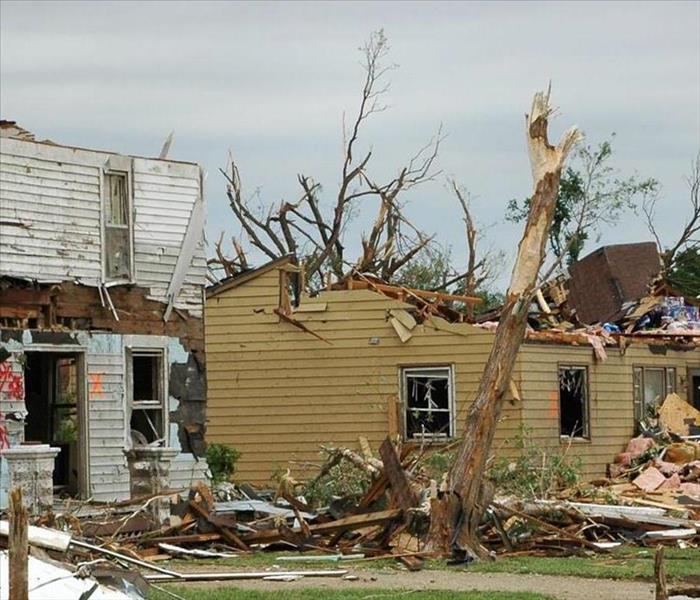How to prepare for tornado season.
1/22/2020 (Permalink)
To protect your property, your family, and yourself during a tornado, it’s useful to develop a plan before the tornado hits. Make sure everyone is familiar with this plan.
As part of the plan, gather contact information and important documents in one place.
Contact information: You should record contact information for:
- Family members – personal cell phones
- Workplaces
- Schools
- Babysitters
- Utility companies
- Any other relevant contact details (such as family friends)
By recording all of these, you can contact friends, family members, and other important people at any time.
Important documents: Your plan should contain copies of:
- Birth certificates
- Social security cards
- Insurance policies
- Photos of your property, for insurance purposes
These documents will be vital if you need to evacuate the area or file an insurance claim following a tornado.
You should also create multiple evacuation plans, in case you need to leave the area and one route is not accessible.
Step 2: Build an emergency kit
The second step to preparing for a tornado is to make an emergency kit. Emergency kits are helpful in the event you lose power or other utilities, get injured, or become trapped. An emergency kit should include:
- Enough water and food for at least three days per person
- A device for communication (such as a radio)
- First aid supplies
- Spare clothes
- Flashlights
- Batteries
- Toiletries
- Maps of the local area
- Medications
How many supplies you need depends on the size of your family. Be sure to pay extra attention to any special circumstances within your family; any infants, medical conditions, or pets will require extra resources. Take all this into account when preparing your emergency kit.
Step 3: Identify shelter areas, or build a safe room
Another way to prepare for a tornado and stay safe when a tornado hits is to identify or build a safe place in your home to take shelter. Your shelter area or safe room should:
- Be on the lowest floor
- Have no windows
- Be as close to the center of the building as possible
- Contain your emergency kit
For these reasons, basements tend to make good shelter areas. If you don’t have a basement, a centrally located bathroom or closet also works.
When the tornado hits, you might not be at home, so identify other safe buildings and tornado shelters in the area, too, such as offices, schools, or town halls.






 24/7 Emergency Service
24/7 Emergency Service
